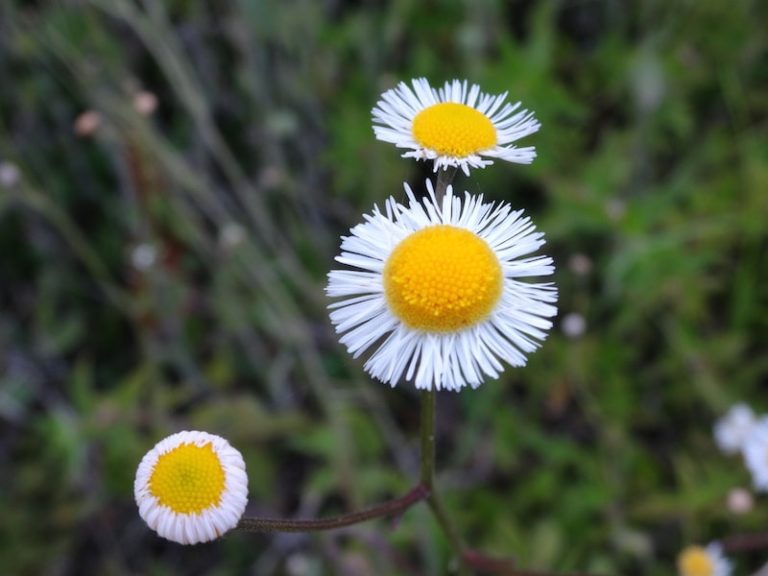
By Devon Higginbotham | Florida Native Plant Society
Ordinarily, the drive from Plant City to Tallahassee is too long and boring to handle without substantial amounts of coffee. But this spring, I was delighted to find the roadside ablaze in wildflowers — enough to skip Starbucks.
For years FDOT has mowed the right-of-ways along its 12,000 miles of roads the width of a football field.
But working with the Florida Native Plant Society and the Florida Wildflower Foundation, there has been a growing awareness of the importance of native wildflowers on our roadways. Not only does it draw tourists, as the changing leaves in the North, but the state is realizing the importance of utilizing these greenspaces as “biological corridors” that will increase habitat for pollinator species, while saving the taxpayer’s money by cutting back on mowing.
When they must mow for safety, contractors are now mowing around the growing plots to allow the seedheads to dry and drop their seeds for the next bloom.
If you prefer the backroads to the major highways and are traveling this spring, keep your eyes open for naturally occurring stands of our native wildflowers.
Many of our urban areas have been mowed, herbicided or plowed under with road construction, prohibiting the growth of wildflowers. But in the rural areas, large swaths are respectfully neglected and left to the wild abandons of nature. These areas abound with wildflowers. The road less traveled — and less mowed — is where nature’s beauty is put on display for all to admire.
These are my favorites:

Tickseed (Coreopsis)
This perky spring bloomer has yellow daisy-shaped petals with a brown center and stands about 3 feet tall on a seemingly leafless stalk. The leaves are very long and slender and resemble the sturdy stalk. Each plant has multiple blooms and grows in close groups. One common variety in our area, known as Leavenworth’s tickseed, was named for Dr. Leavenworth (1796-1862), who was a Yale graduate and army surgeon stationed in 1838 at Fort King, near Tampa, during the Second Seminole Indian War. The Coreopsis was named our state wildflower in 1991. (dos.myflorida.com/florida-facts/florida-state-symbols/state-wildflower/)
Fleabane (Erigeron)
This small white-and-yellow wildflower stands about 18 inches tall on a bare stalk, but is a prolific bloomer and never fails to catch my attention. The blooms are quite small, but can number in the thousands along the roadside, creating a sea of floating bloom heads. Take time to look at one up close, and you’ll see a yellow center with a perfect ray of white petals surrounding it.

Meadow-beauty (Rhexia)
The meadow-beauty likes to stand off from the road and cling to the hedge rows in abundance. It stands only about a foot tall but makes up for its lack of stature with a profusion of lavender-and-yellow flowers in tight proximity. You can find it in damp, low areas and ditches. Just like its name, it’s a gorgeous addition to the colors of the roadside, peeking out from among the grasses.
Spiderwort (Tradescantia)
Bright blue flowers are rare in

nature, but Florida is blessed with plenty of spiderwort. The three-petaled blue flowers along the roadsides that bloom in profusion in the spring don’t seem to be bothered by the dust and exhaust hurled on them by passing cars. Each day, a bloom will open and die, followed the next day by another. But you have to be a morning person to see them. By noon they are done for the day. The genus is named after John Tradescant (1608-1662), a botanist who served as head gardener to King Charles I of England.
To learn more about Florida native plants and wildflowers, join the Suncoast chapter of the Florida Native Plant Society at SuncoastNPS.org. We meet every third Wednesday of the month at 7 p.m. at the Seffner Extension Service office, 5339 CR 579, Seffner. You can also learn more about Florida native plants at fnps.org.
